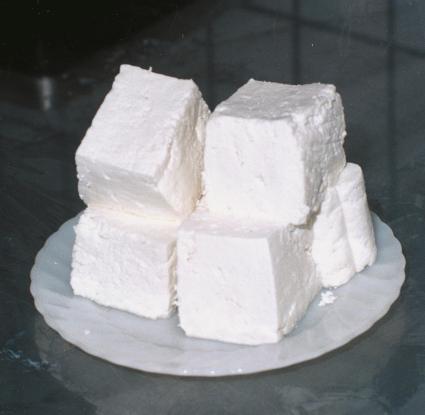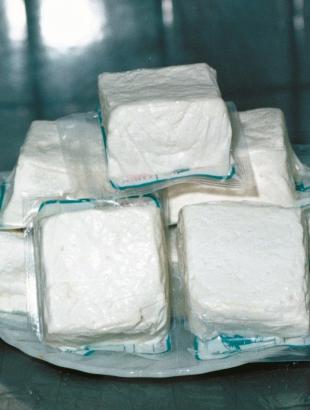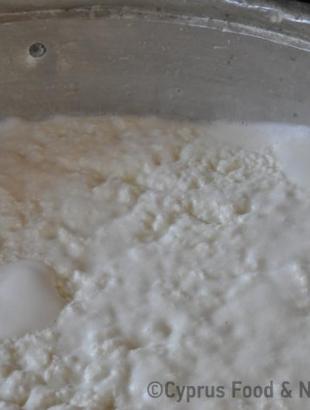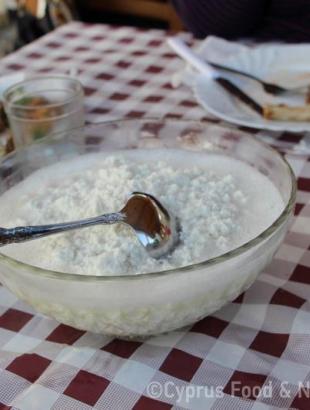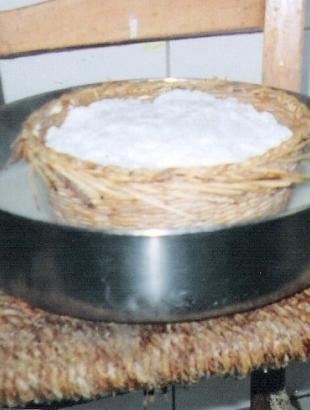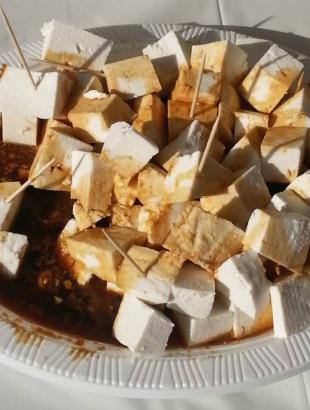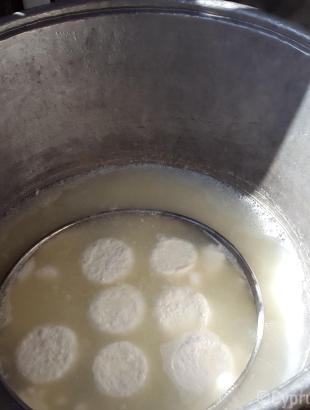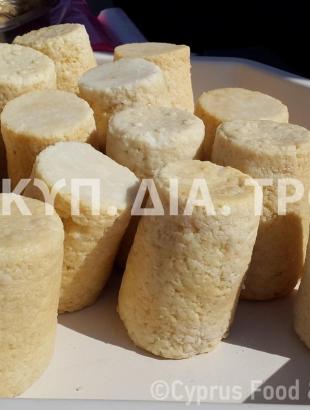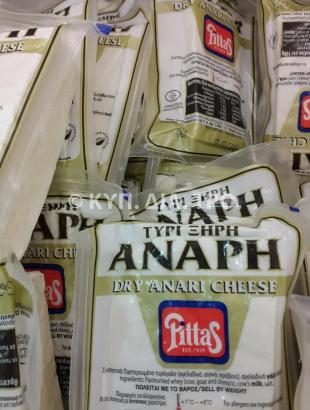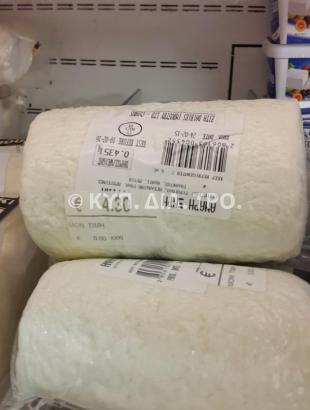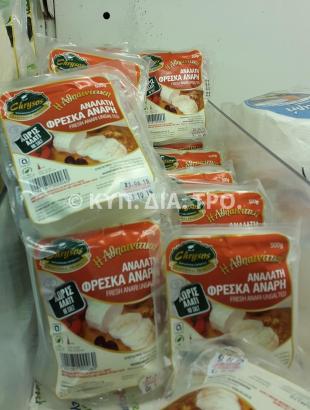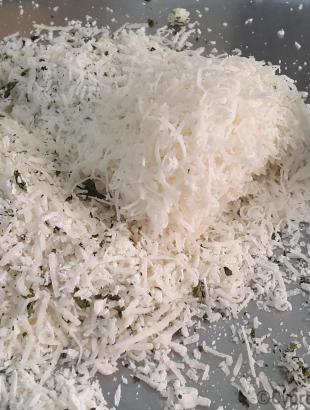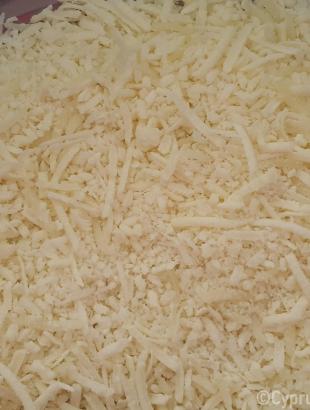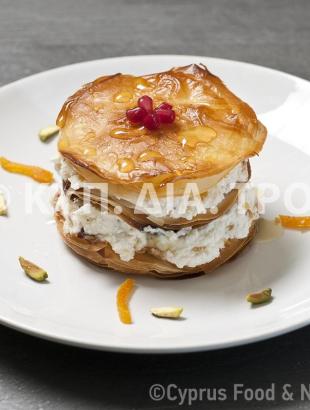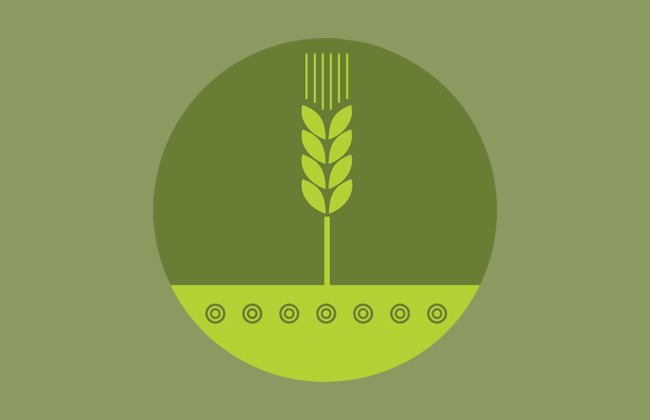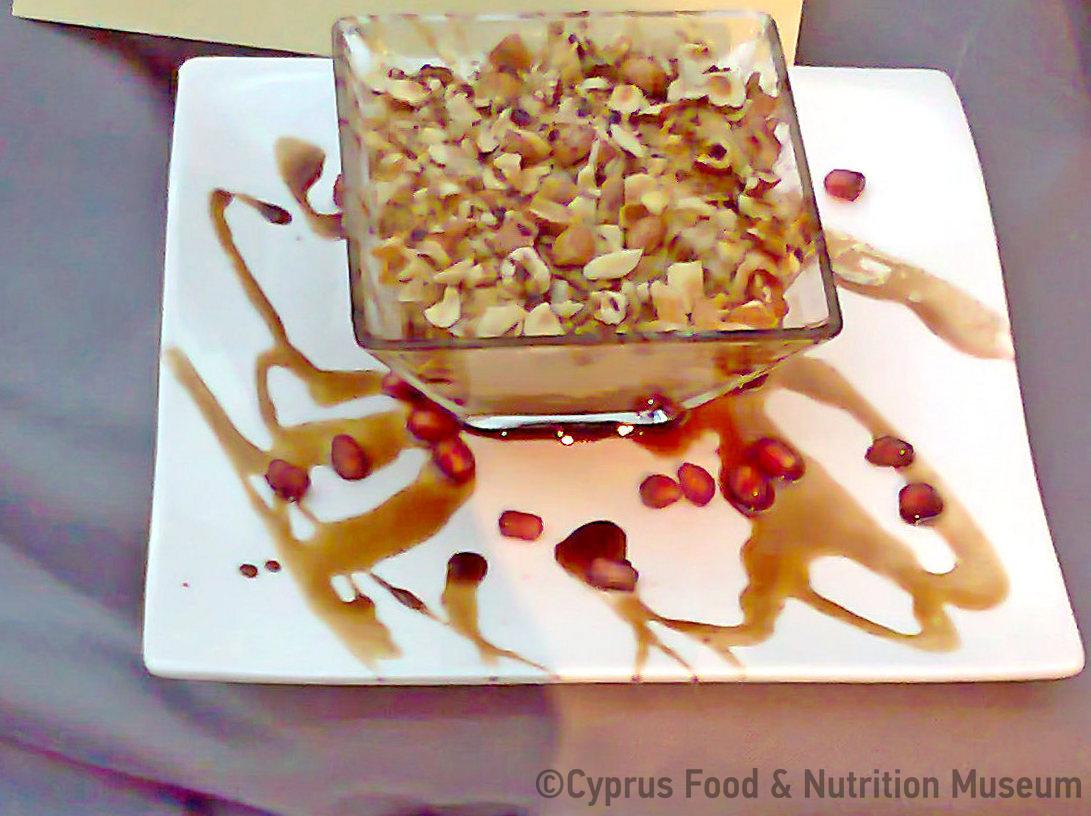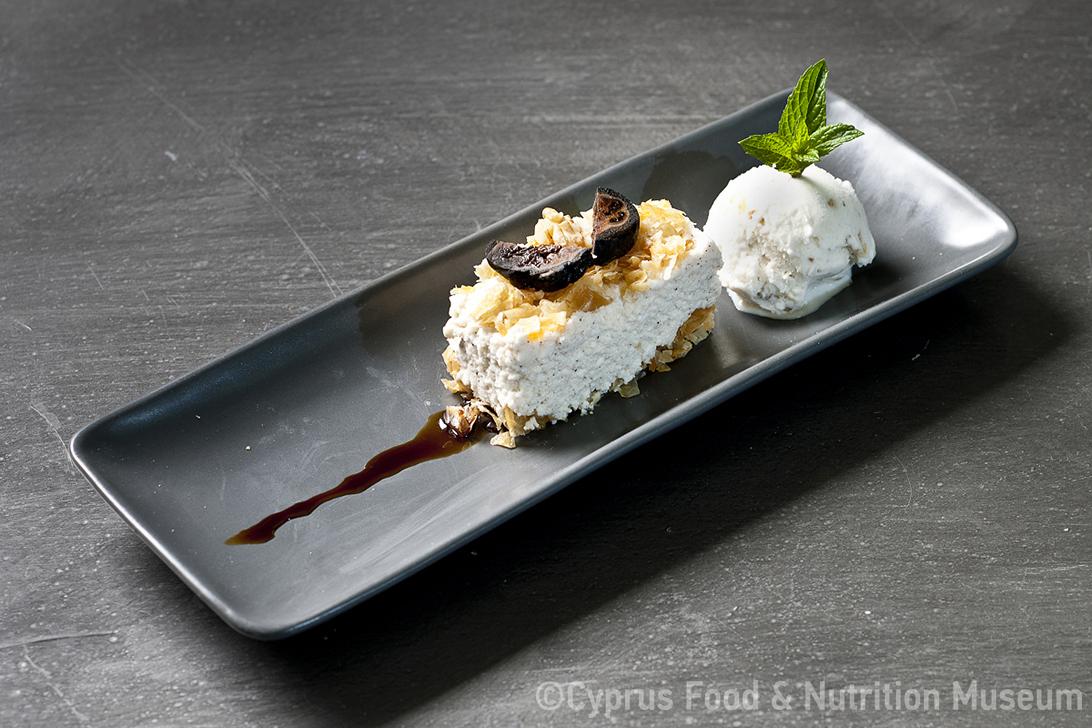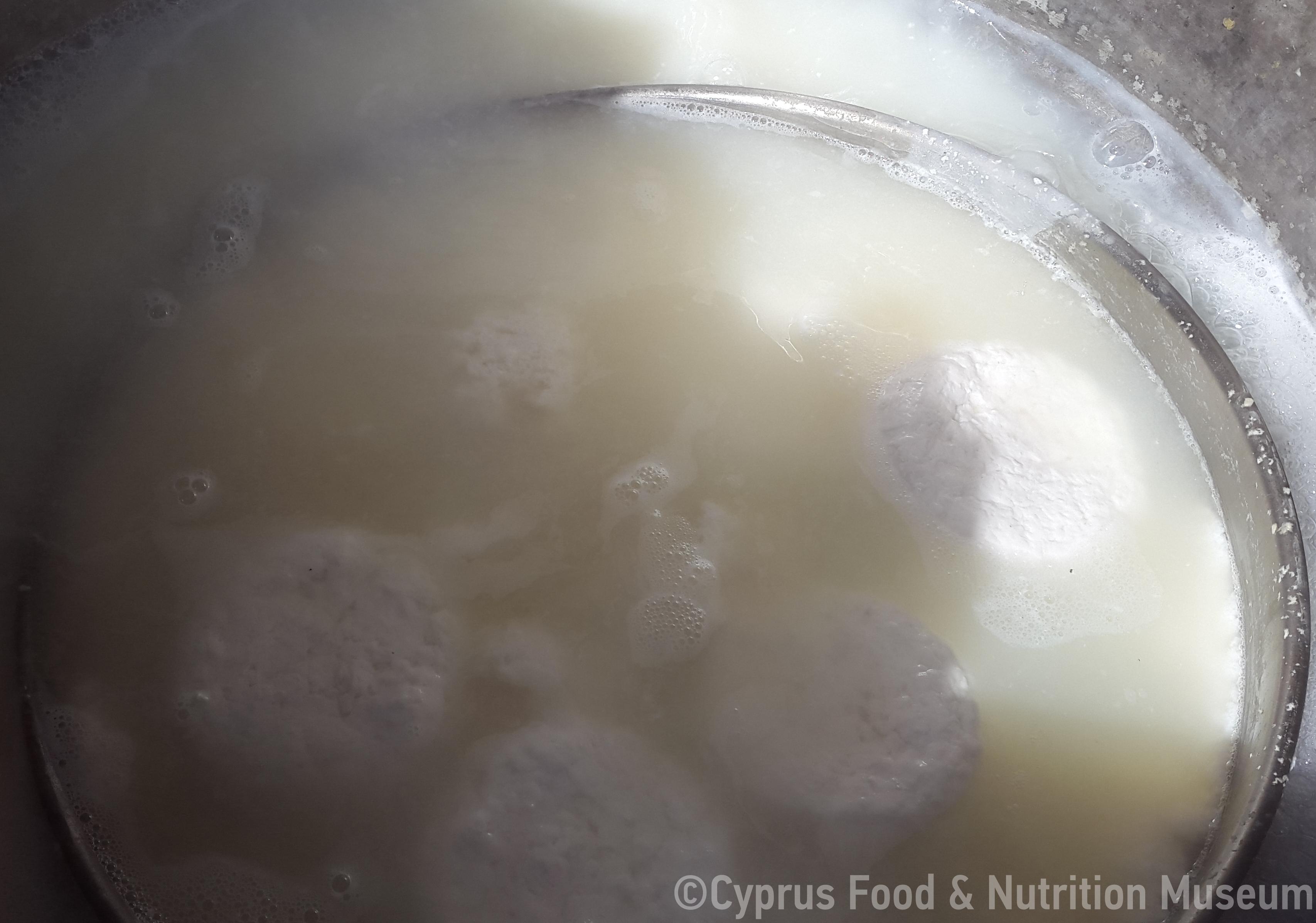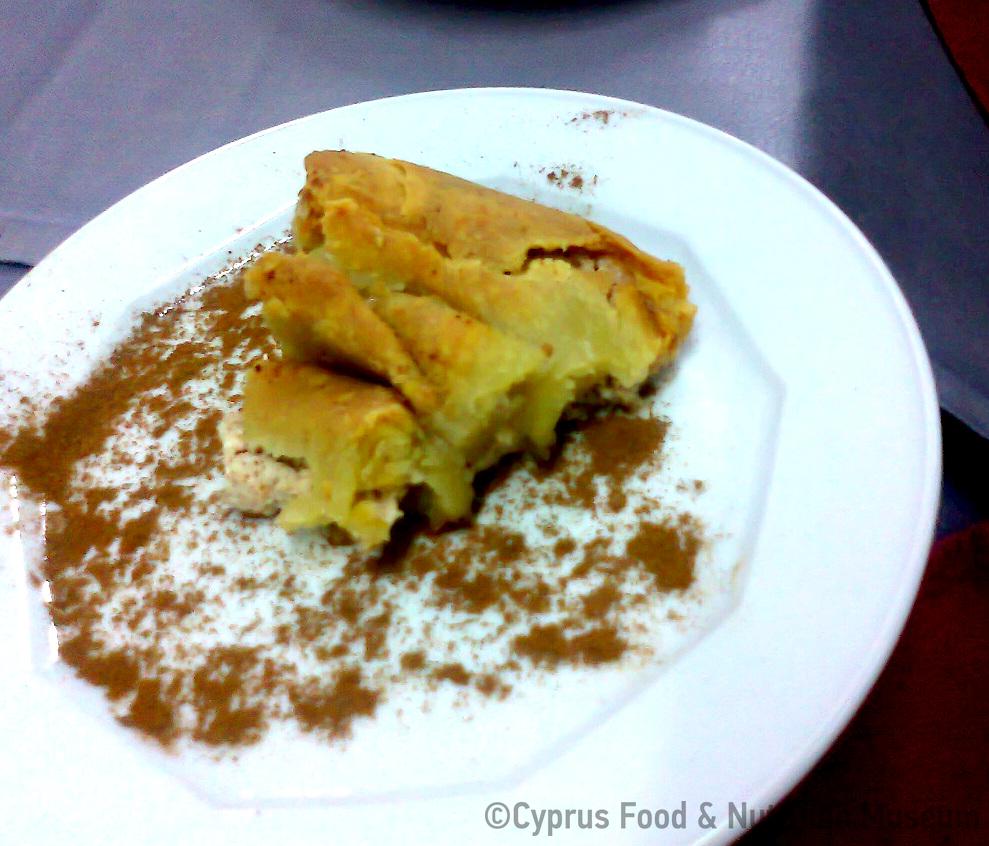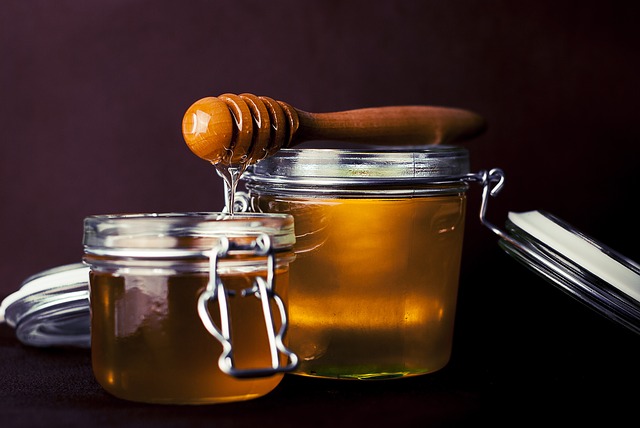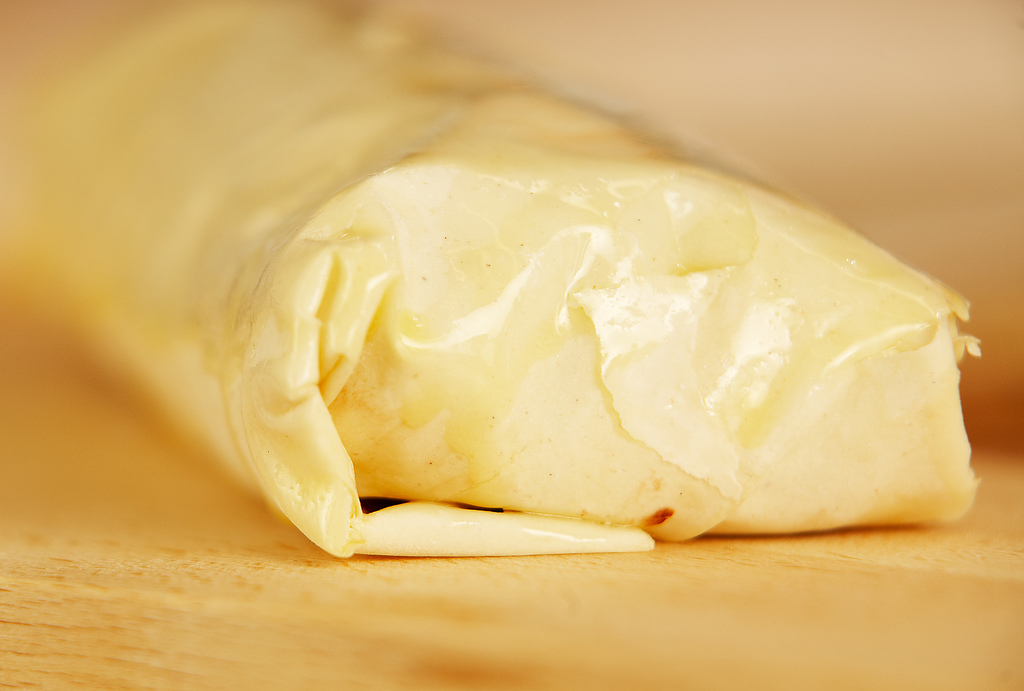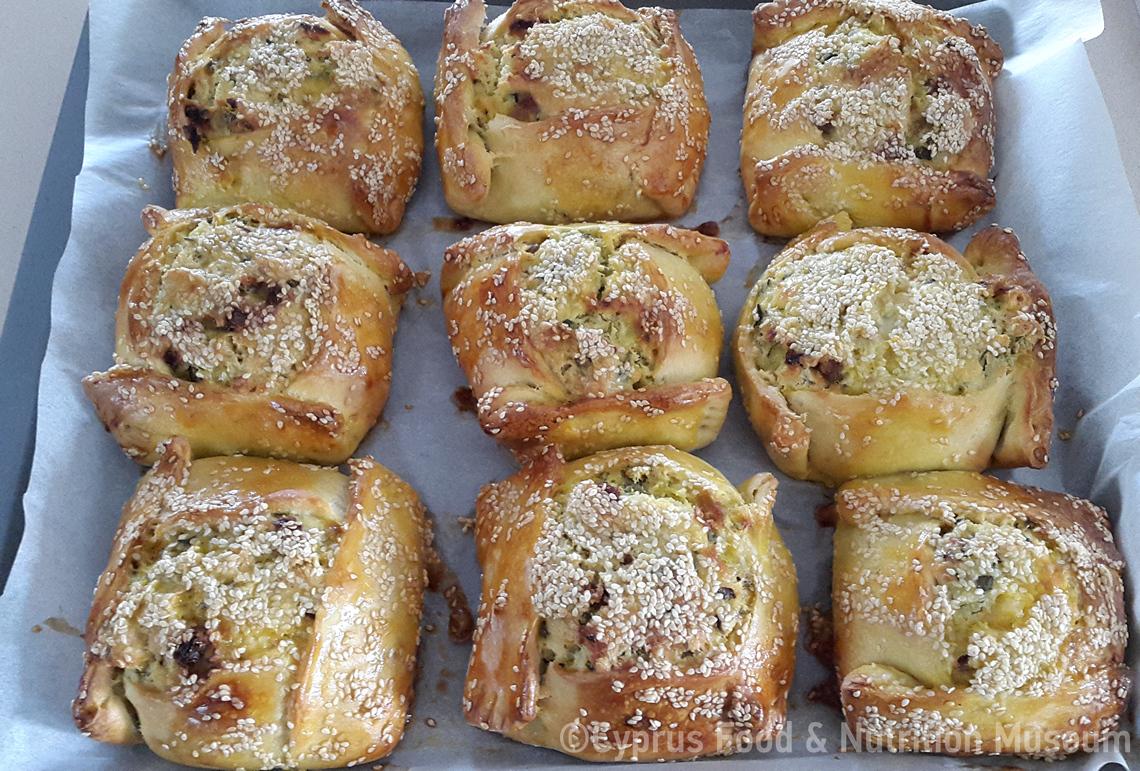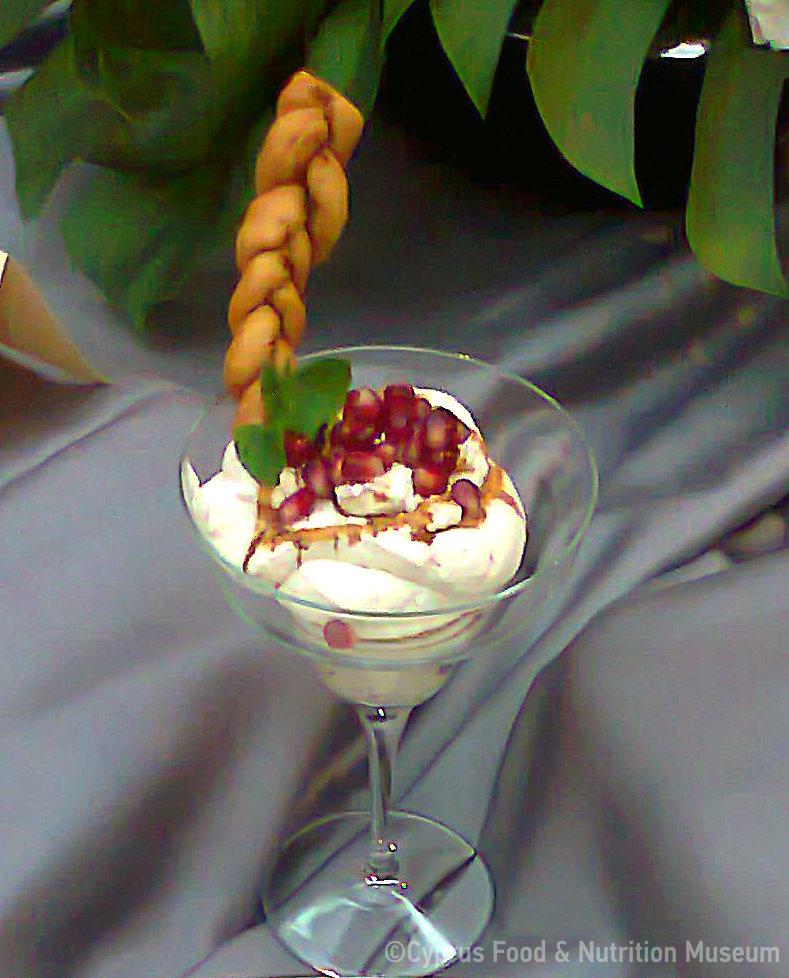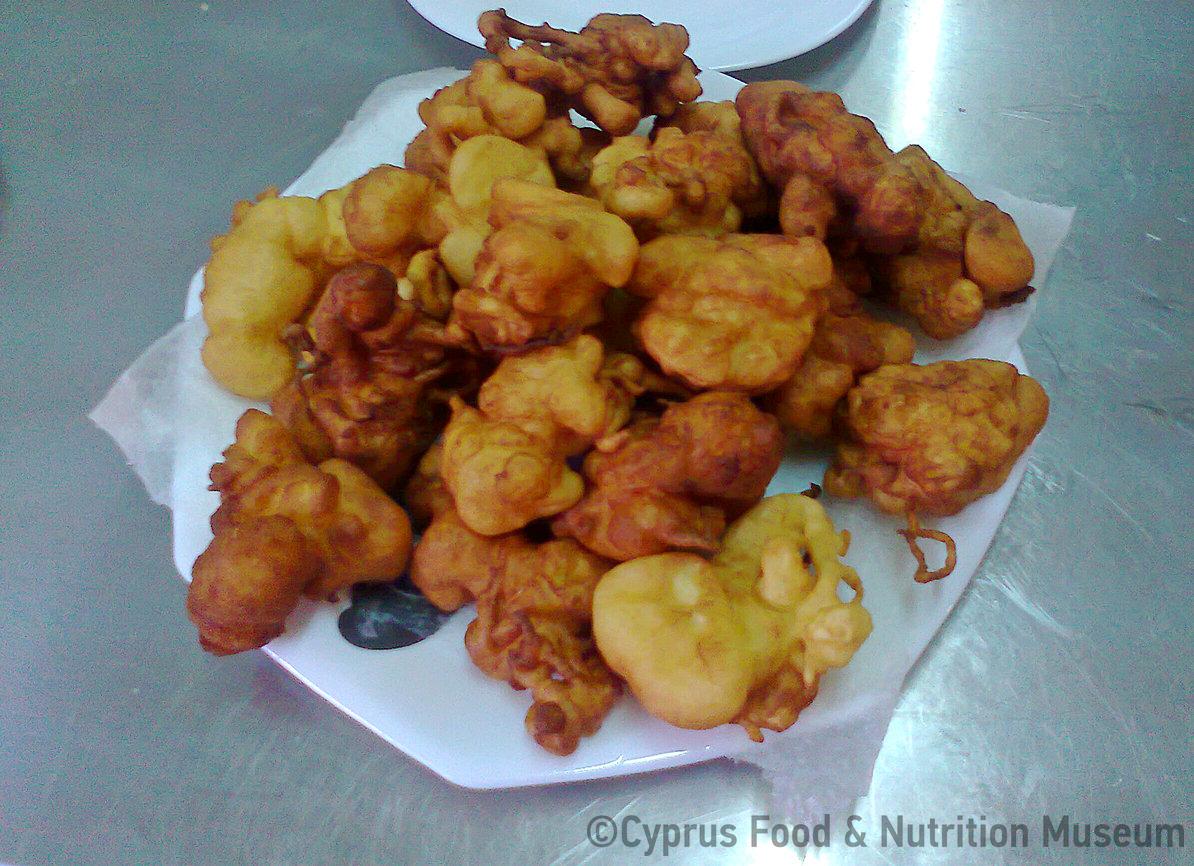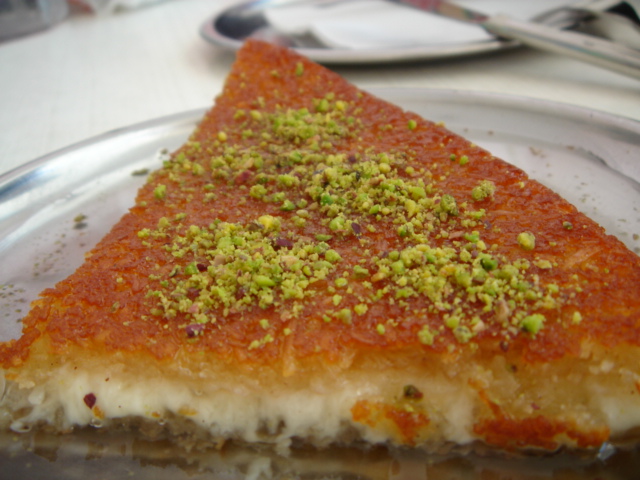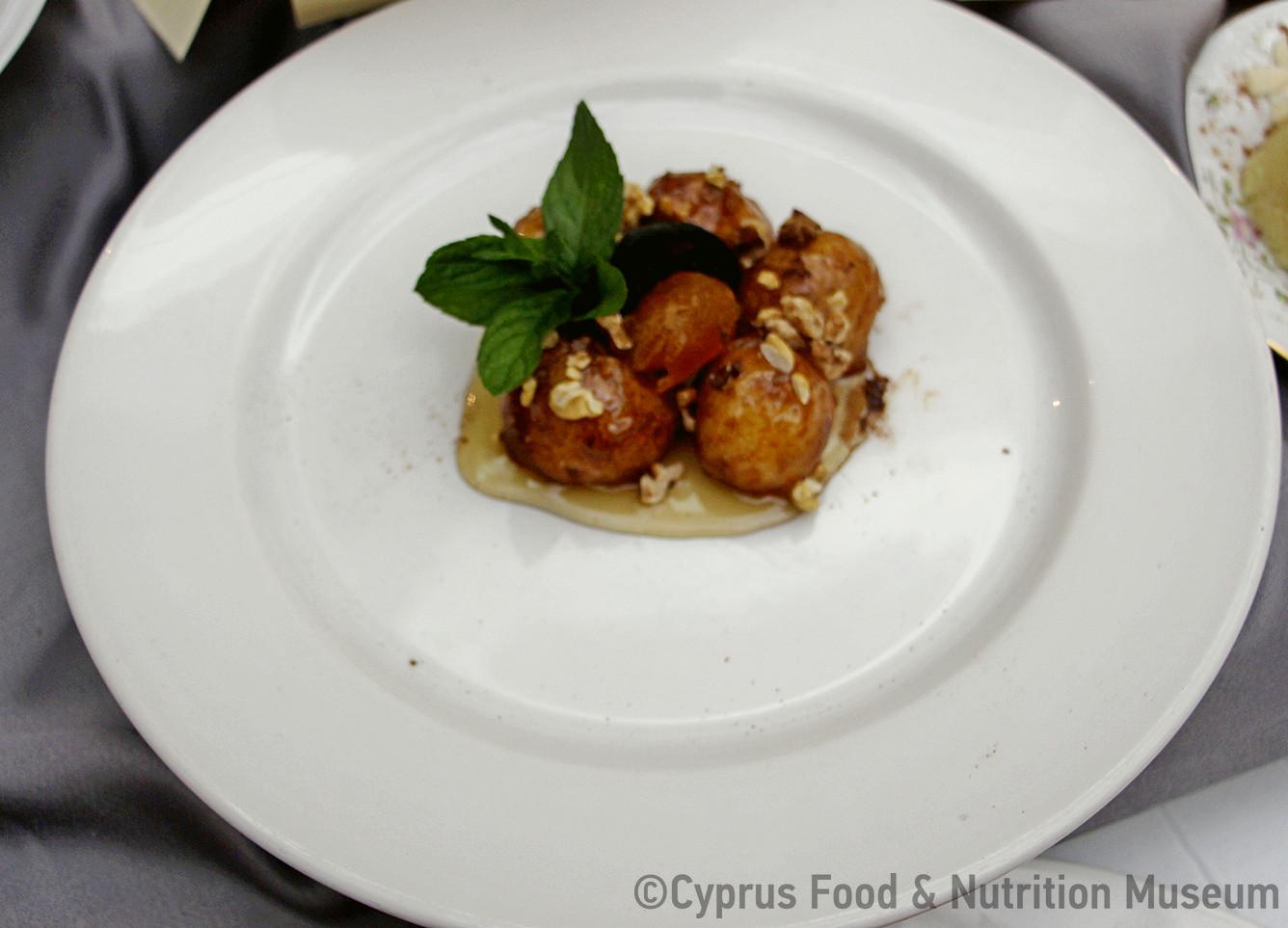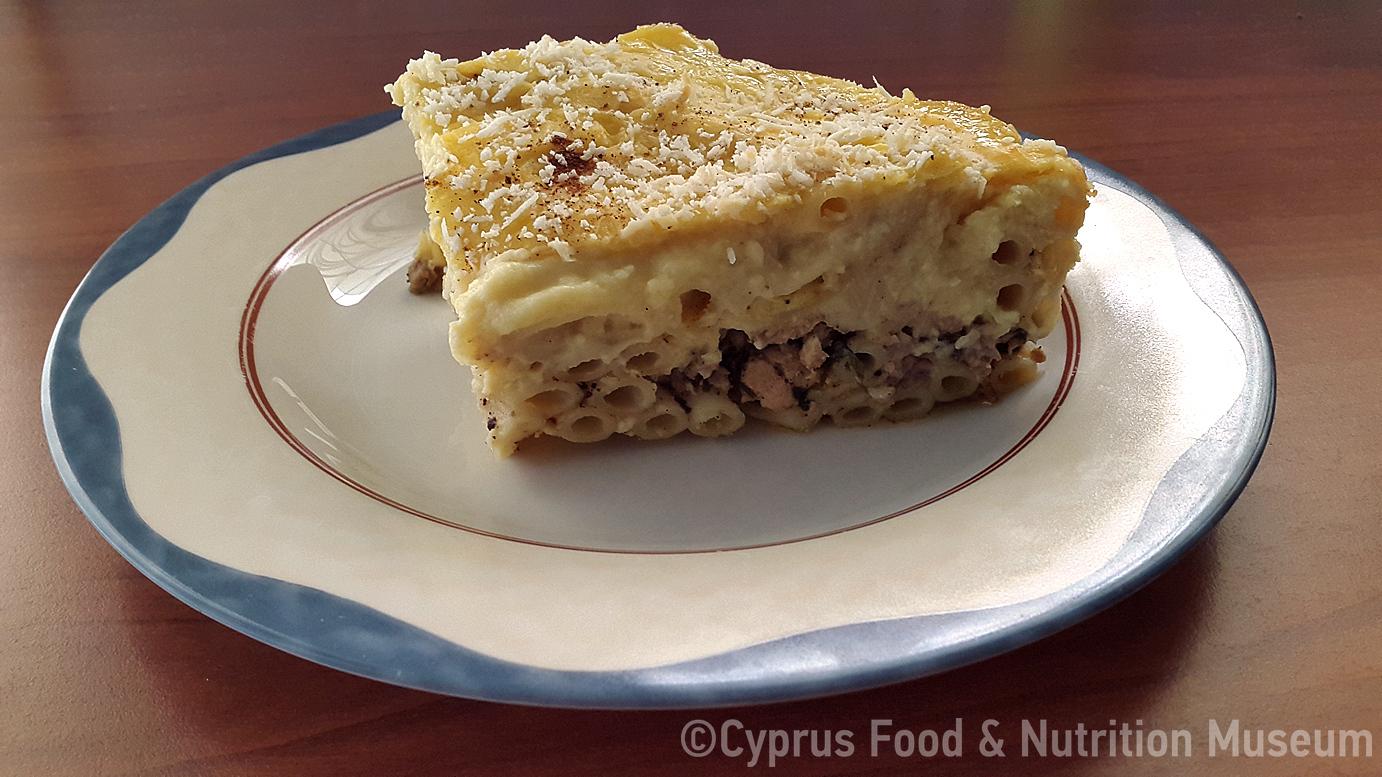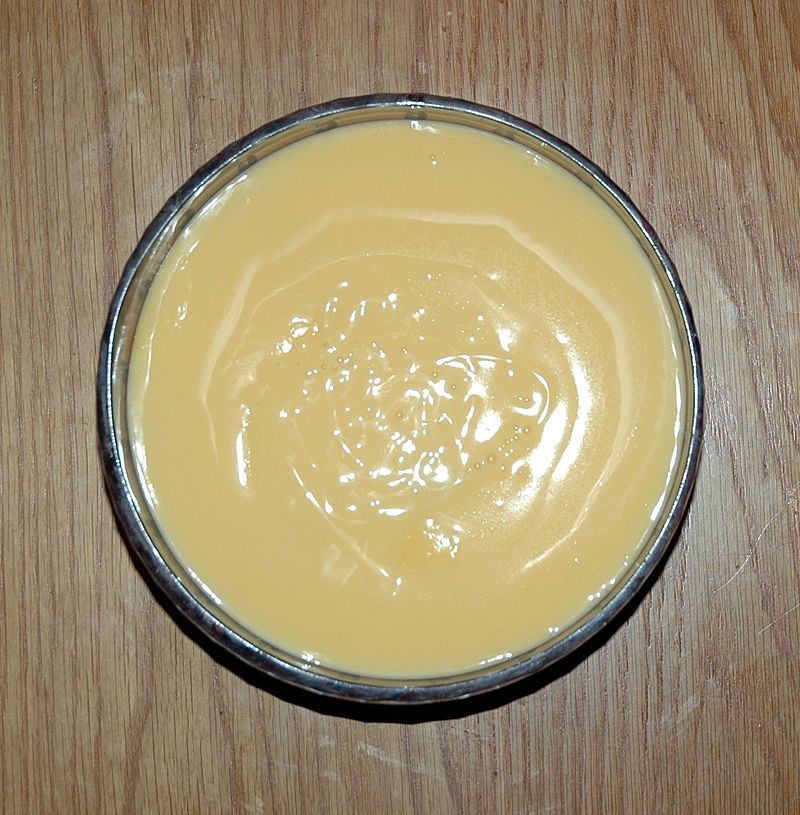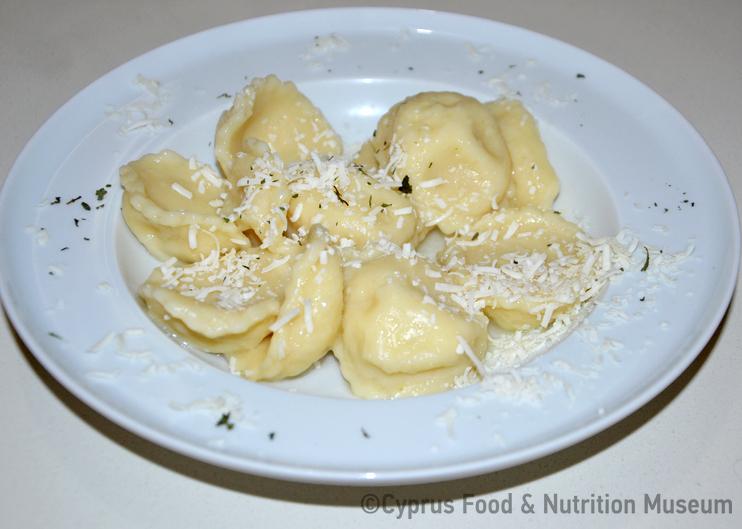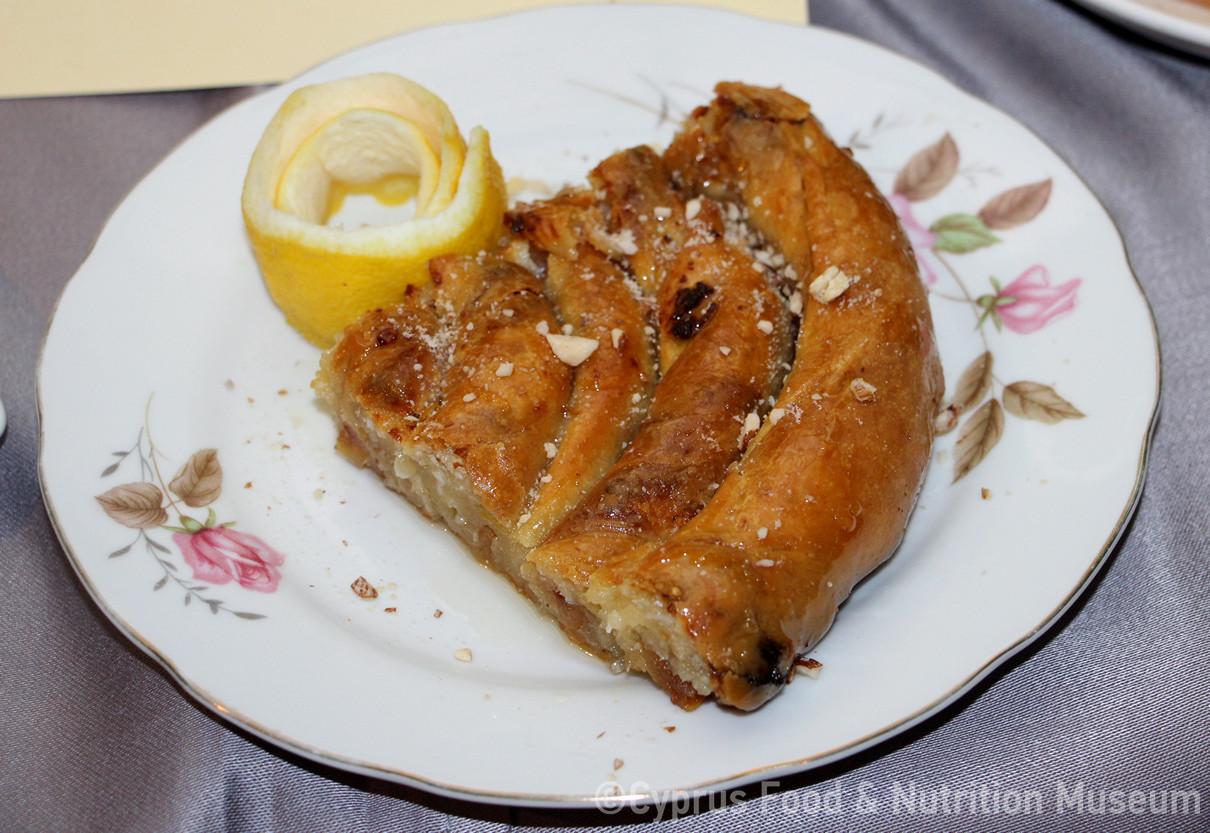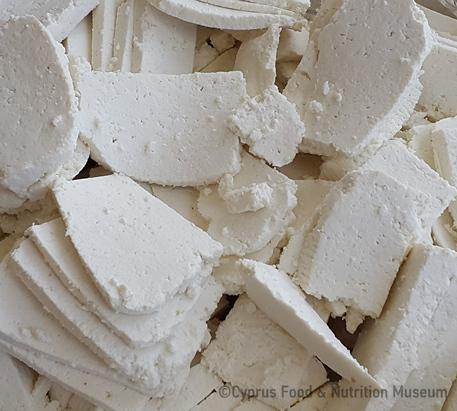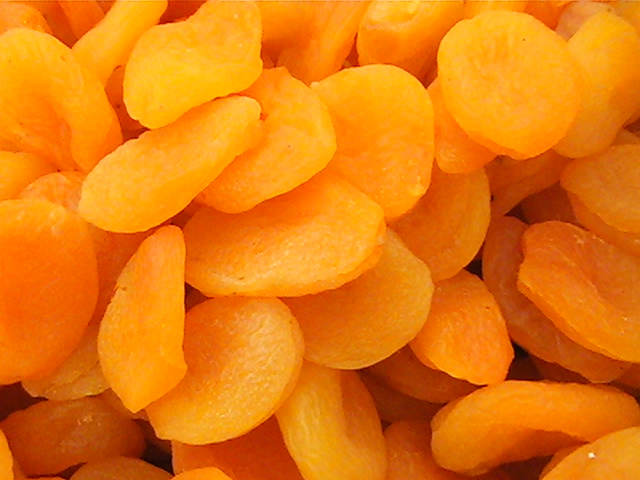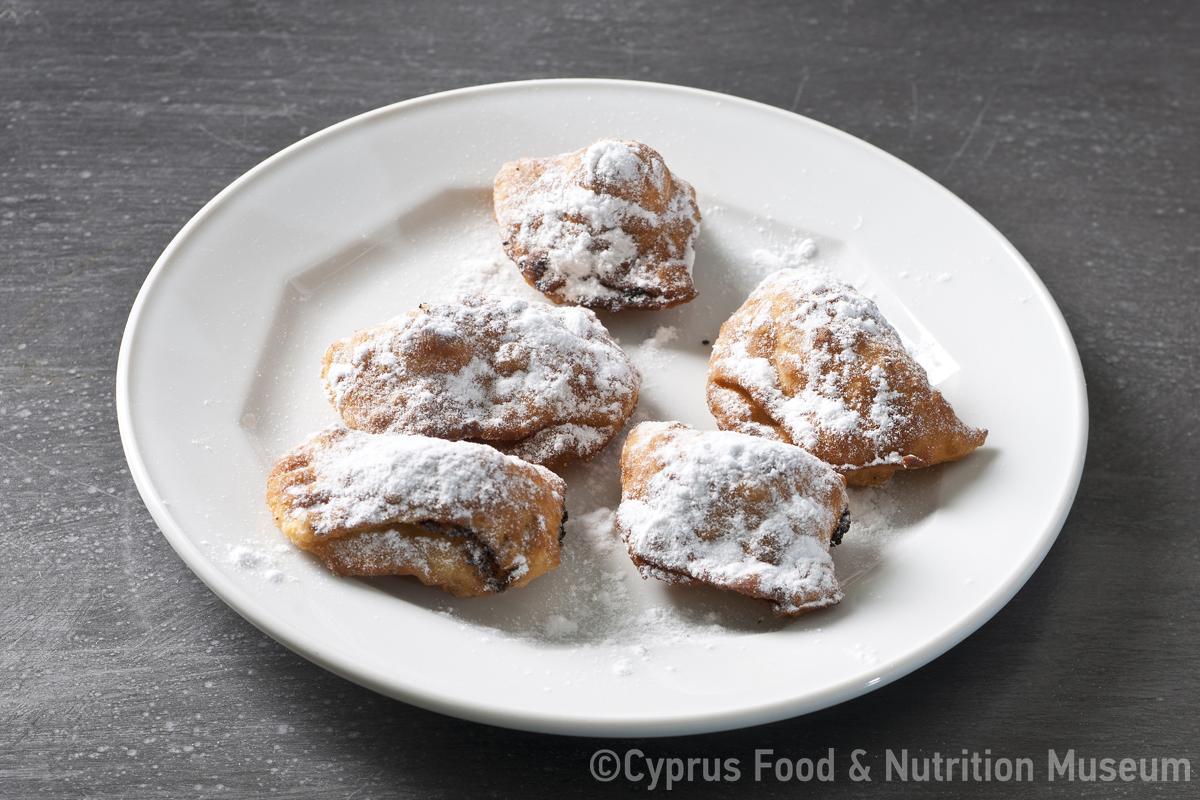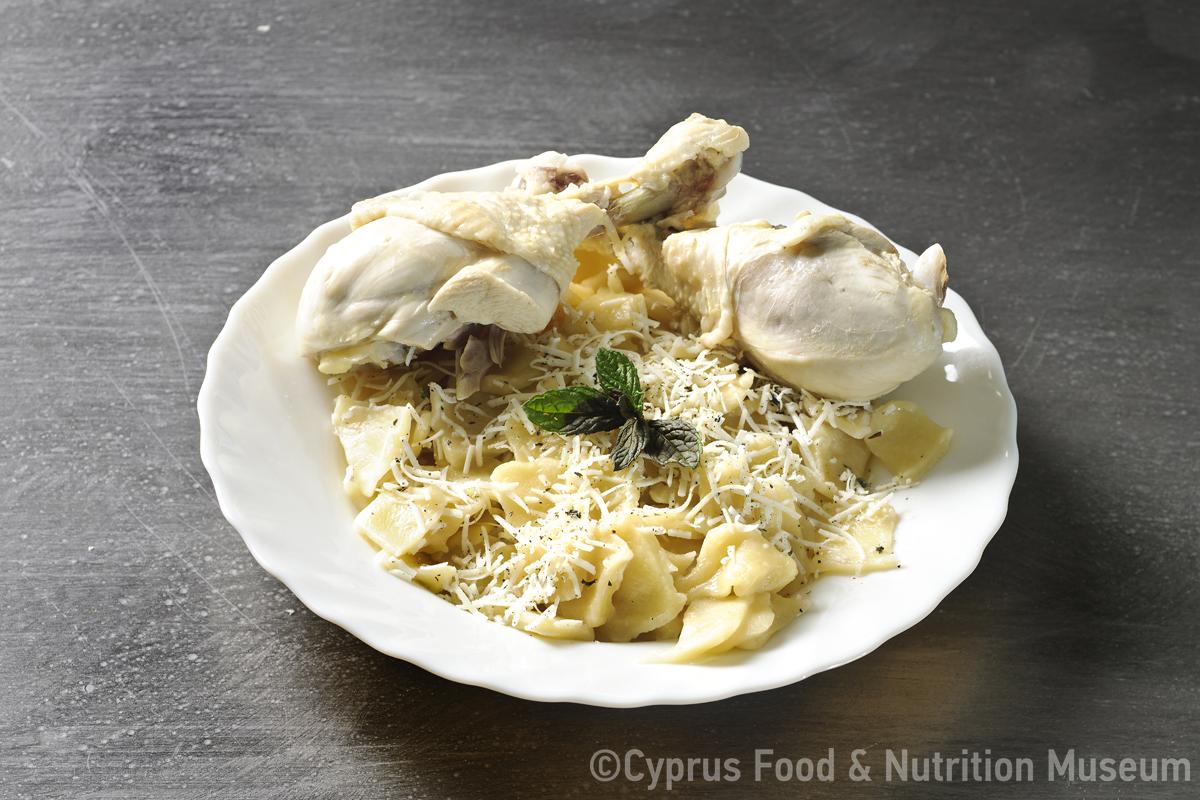Cypriot white cheese (similar to myzithra/ricotta). Fresh, unsalted anari is usually used for the preparation of traditional pastries such as pourekia with anari, anaropitta and others. Fresh anari is sun-dried to be used as trimma (grated) over spaghetti or other pasta dishes.
Name - Origin
Mυζήθρα, ανθότυρο. "Anari is a soft cheese, a by-product of halloumi and is produced after removing the curd that makes halloumi and reheating the rest of the milk at a temperature above 90°C" (Economides 2004, 80).
A Cypriot white cheese. Anari is the cheese that is collected following the production of halloumi (Petrou-Poeitou 2013, entry Αναρή, 24).
The name αναρή (anari) comes from the Greek word αναδερή, ανάριο (anaderi, anario) (Petrou-Poeitou 2013, article Αναρή, 24). According to another interpretation, the etymology of the word is as follows: αναρή (anari) < αναρέω (anareo) = χαλνώ (spoil) because it is easily spoiled or αναρή (anari) < άνω (ano) + ορρός (νορός)(orros - noros) (anari is made from the noron of boiled milk that is reheated) (note: Kyriaki Panteli). Sometimes when Cypriots use the word "análati/ análates" (=unsalted) they mean anari. Typical phrase: 'I bought two analates instead of anari' (Kypri 1983 [2003²], entry ανάλατη,η, 125). "The adjective analati is used as a noun, denoting alone the unsalted anari, while the noun anari is usually used to denote the salted anari" (Great Encyclopedia of Cyprus, vol. 2, entry ανάλατη,η, 149). Anari with 'noron', which was put on a plate with sugar and eaten with a spoon, was called anari tis kouppas (Mavrokordatos 2003, 314). Pittarka or plaka is anari (myzithra), which has a flattened shape (Panaretos 1963, 171).
Anari was produced with sheep's and goat's milk right after the production of halloumi. Traditionally, they would add milk to the milkwater left over after extracting the halloumi, and mix it with a fine reed which had savory herb on its tip. In a short time, anari would rise to the surface, collected and placed in talarka to drain (Ionas 2001, 102-146).
"Inside the hartzin (big copper cauldron) or other container there is noros. After removing the drosino for the preparation of the halloumi, the fire is lit again with wood or gas under the hartzin and the noros is gradually heated while stirring it with a wooden stirrer or fine reed, with a savoury herb on its tip. The stirring prevents any remaining curd from sticking. If a fine reed with a savoury herb is used, all the grains are collected in the savoury herb, placed in the palm of the hand, shaped with the fingers, and the curd is called 'tyropoula'. After the noros has been heated for a short time, then fresh milk is added, the prosgalon or anarogalo, as it is called. Also, noros may be added, which is the liquid that emerges when the curd is pressed to make the halloumi, and the liquid is rolling out of the curd into a bucket or other water container. When the whey is boiling, the anari begins to rise to the surface while you continue to stir. When all the anari comes to the surface and forms a thick layer and starts to break from the heat (boil), then add a little water. Other people would sprinkle a bit of vinegar or squeezed lemon juice or citric acid or even salt to help gather all the anari. Then the anari would be scooped out with a slotted spoon onto a cloth which was placed in a wooden mold or talari and pressed to get all the anari out. Weights were then applied for about an hour and then the anari was salted and cut into pieces of about 10 x 10 cm. Some people would add spearmint to the salt' (Economides 2004, 81).
Functional and symbolic role
There are two types of anari: (a) unsalted anari which is consumed fresh, and (b) salted anari which is usually dried in order to be preserved for a longer period of time (Great Encyclopedia of Cyprus, vol. 2, entry αναρή,η, 154)
Fresh, salted anari is consumed in the same way as all kinds of cheese (Economides 2004, 82). Unsalted anari is usually used fresh for the preparation of traditional sweets such as pourekia with anari, anaropitta, etc. Unsalted anari is also enjoyed with honey which used to be the breakfast dish in old times. (Great Encyclopedia of Cyprus, vol. 2, entry ανάλατηi,η, 149; Economides 2004, 82).
Fresh anari was placed in the sun to dry, so as to be grated over pasta dishes such as spaghetti, toumats̆ia, trin and others. In the old days, dried anari was kept in large clay pots (kourelloús), into which a little bit of bran or wheat flour was sprinkled (Economides 2004, 82).
Anari or salted anari, when dried, was usually grated to be used over pasta (Great Encyclopedia of Cyprus, vol. 2, entry αναρή,η, 154; Xioutas 1978, 13; Kyprianou 1992, 69; Kypri 1983 [2003²], entry ανάλατη,η, 125).
Anari is also used in the preparation of ravioles which is a traditional cypriot dish of ravioli made with either halloumi or anari filling or a combination of the two.
During the cheesefare week (the week before Lent) Cypriots always included traditional cheese, such as anari and halloumi, but also preparations made with them, such as anaropitta, pourekia with anari and ravioles (Kypri - Protopapa 2003, 120).
In Lefkara village, on the 2 days following an engagement, the two families would exchange gifts. On the first day, five or six people from the groom's family would take to the bride's family honey with anari and anthotyro in trays covered with woven towels. On the following day, the bride's family would offer to the groom's family anthotyro with honey together and almond preserve. (Protopapa 2005, vol. A, 51)
Additional information and bibliography
Yangoullis K. G. (2014), Thesaurus of the Medieval and Modern Cypriot Dialect. Hermeneutic, Etymological, Phraseological and Nomenclatural. Library of Cypriot Folk Poets,74, Nicosia.
Ionas I. (2001), The traditional professions of Cyprus, Publications of the Centre for Scientific Research, XXVII, Nicosia.
Kypri Th. D. (ed.) (1983 [2003²]), Materials for the compilation of a historical dictionary of the Cypriot dialect, Part B, Glossary of Xenophontos P. Pharmakidou, Publications of the Centre for Scientific Research, IX, Nicosia.
Kypri T. - Protopapa K. A. (2003), Traditional dough preparations of Cyprus. Their use and significance in customary life, Publications of the Centre for Scientific Research, XVIII, Nicosia, Nicosia.
Kyprianou P. Chr. (1992), «Λαογραφικά του Παλαίκυθρου», Λαογραφική Κύπρος 42 (παράρτημα), 1-101.
Mavrokordatos G. I. (2003), Δίκωμο: Το χθες και το σήμερα, Nicosia.
Xioutas P. (1978), Κυπριακή λαογραφία των ζώων, Publications of the Centre for Scientific Research, XXXVIII, Nicosia.
Economides S. (2004), Το γάλα και τα γαλακτοκομικά προϊόντα της Κύπρου με ιδιαίτερη αναφορά στο τυρί χαλλούμι, Cyprus Dairy Industry Organisation, Nicosia.
Panaretos A. (1963), «Κυπριακαί λέξεις», Cypriot Studies KZ, 153-177.
Pavlides, A. (ed.) (1985). Great Encyclopaedia of Cyprus, vol. 2, Filokypros, Nicosia.
Petrou-Poietou E. (2013), Where do they come from. Words and stories from the world of taste, Epiphaniou Publications, Nicosia.
Protopapa K. (2005), Έθιμα του παραδοσιακού γάμου στην Κύπρο, Vol. A-B, Publications of the Centre for Scientific Research, XLV, Nicosia.
Dimitra Demetriou, Dimitra Zannetou, Tonia Ioakim, Stalo Lazarou, Ivi Michael, Kyriaki Panteli, Savvas Polyviou, Maria Tsangari, Petroulla Hadjittofi, Argyro Xenophontos

